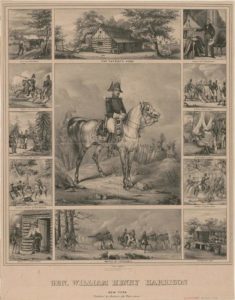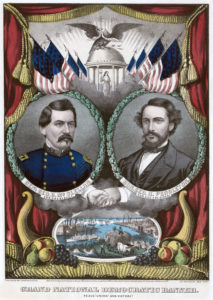by Ed DeCecco
In part 1 of this article, I reviewed the trial court’s decision in Knight Foundation v. Trump. Perhaps it is not surprising that there could be a public forum related to the @realDonaldTrump account, which has 55 million followers, but even a local official’s social media account with just over 2,000 followers can be a public forum for purposes of the First Amendment, as illustrated by the next case.
Davison v. Loudon Cty. Bd. of Supervisors[1]
Defendant Phyllis Randall was a Loudoun County supervisor who personally maintained a public “Chair Phyllis J. Randall” Facebook page. In response to comments Plaintiff Davison made at a public meeting about other public officials, Ms. Randall blocked Mr. Davison from the page for about 12 hours. She then thought the better of it, and removed the block. Unfortunately for her, the damage was done, and Mr. Davison sued her over the block.
Ms. Randall claimed that her Facebook was just a private account, and, therefore, she was free to manage it as she saw fit. Based on the following factors, however, the trial court determined that she was operating the page under the color of state law:
- The page was created to address her new constituents;
- She used it as a tool of governance by, among other things, holding back-and-forth constituent conversations and announcing her activities as Chair and important events in local government;
- She used county resources to support the page insofar as her chief of staff assisted her in maintaining the page, and she included links to materials created by county employees or made with county resources;
- She “swathe[d] the ‘Chair Phyllis J. Randall’ Facebook page in the trappings of her office” by, among other things, referencing her title, listing her county information, categorizing the page as that of a public official, addressing her posts to “Loudon”, submitting posts on behalf of the Loudon Board of Supervisors as a whole, asking her constituents to communicate with her on the page, and typically posting matters relating to her office.[2]
Likewise, because her block of Mr. Davison was in response to comments he made at a public meeting, the court determined that the act of blocking also arose out of public, not personal, circumstances.
The court next determined that Ms. Randall violated Mr. Davison’s rights under the U.S. and Virginia Constitutions. Mr. Davison’s criticisms of official conduct, while personally offensive to Ms. Randall, were protected speech. In addition, Ms. Randall created a forum for speech by creating her Facebook page.
In reaching this conclusion, the court focused on two features: The nature of Facebook and how the defendant used it. The court observed that “[w]hen one creates a Facebook page, one generally opens a digital space for the exchange of ideas and information.”[3] Moreover, Ms. Randall’s practice contributed to the creation of the forum. She deliberately permitted public comments on the page and allowed virtually unfettered discussion on it. She also affirmatively solicited comments from her constituents—”I really want to hear from ANY Loudoun citizen on ANY issues, request, criticism, complaint, or just your thoughts. However, I really try to keep back and forth conversations … on my county Facebook page (Chair Phyllis J. Randall) or County email….” (gratuitous capitalization included in original).[4] To the court, this was more than enough to create a forum for speech.
Ms. Randall did not have a neutral policy or practice that she applied in an evenhanded manner, but rather blocked Mr. Davison based on his criticism of her colleagues in county government. As such, the court did not worry about the specific type of forum that was created, because it determined that Ms. Randall’s block was viewpoint discrimination, and viewpoint discrimination is prohibited in all forums. As a result, the court entered a declaratory judgment in favor of Mr. Davison’s First Amendment claims, and the Loudoun County Board of Supervisors has since appealed the decision.
Hargis v. Bevin[5]
Not all recent decisions concerning social media pages, however, have gone against elected officials. A federal district court ruled against citizens who sued Kentucky Governor Matt Bevin because they were blocked from his Facebook and Twitter accounts.
As in the other cases, it appeared that the plaintiffs were blocked based on their criticism of the public official hosting the page. One plaintiff was blocked from Twitter after making comments about the governor’s tardy property tax payment, and the other was blocked on Facebook after criticizing the governor’s right-to-work policies. Plaintiffs said the blocks violated their First Amendment rights to engage in protected public speech in a traditional public forum. Governor Bevin argued that their comments were off-topic and detracted from his ability to communicate with the public on his chosen topics and, therefore, the blocks were a reasonable limitation on speech.
The court disagreed with both sides. Fortunately for Governor Bevin, his error was failing to take his argument far enough, as the court determined that his use of the privately owned social media accounts to speak on his own behalf as a public official constituted government speech. As discussed in part 1 of this article in the context of the Trump case, government speech is not subject to the requirements of the First Amendment. Moreover, the governor never intended his accounts to be a forum whatsoever, and he had no constitutional obligation to listen to everyone who wishes to speak to him. Thus the court determined that “public officers can ‘speak’ through a privately owned platform like Twitter and Facebook, and they can choose whom to listen to on those platforms without offending the First Amendment.”[6]
In reaching this conclusion, the court also discounted the effect of the block, as the plaintiffs were prevented only from having a direct relationship with the governor; they were not blocked from speaking on Twitter or Facebook altogether. Accordingly, the court denied the plaintiff’s preliminary injunction. The court, however, also observed that its decision did not necessarily leave the plaintiffs without any recourse: “Though Plaintiffs might disagree with [the governor’s] social media practices, the place to register that disagreement is at the polls.”[7]
No word at this time whether the plaintiffs intend to appeal the decision or simply register their disagreement at the polls.
Other Cases
The three cases discussed in parts 1 and 2 of this article demonstrate different approaches that trial courts have taken in cases against public officials who have blocked people from their social media accounts. It is important to note that none of these decisions are binding in Colorado, and perhaps they won’t even survive appeal. It will be interesting to see what happens in these cases and others.
Other cases that may soon be decided are lawsuits against Maine Governor Paul LePage (Leuthy v. LePage); Arizona Congressman Paul Gosar (Morgaine v. Gosar); and Wisconsin State Assembly Speaker Robin Vos, State Representative John Nygren, and State Representative Jesse Kremer (One Wisconsin Now v. Kremer, et al.). All of these cases are still pending in federal district courts.
Finally, Maryland Governor Larry Hogan settled a lawsuit filed by the ACLU of Maryland relating to his social media accounts, with the state paying the plaintiffs $65,000 and the governor establishing a new social media policy to govern his social media accounts. The new policy prohibits viewpoint discrimination and allows commentary on his Facebook page on any topic he has addressed. Both sides appear to claim this result as a victory.[8]
[1] Davison v. Loudoun Cty. Bd. of Supervisors, 267 F. Supp. 3d 702 (E.D. Va. 2017)
[2] Id. at 714.
[3] Id. at 716.
[4] Id.
[5] As of the date of this article, the case was not selected for official publication, but is available on Lexis at Hargis v. Bevin, 2018 U.S. Dist. LEXIS 54428 (E.D. Ken. 2018)
[6] Id. at 24.
[7] Id. at 21.
[8] http://www.baltimoresun.com/news/maryland/politics/bs-md-aclu-hogan-facebook-20180402-story.html














